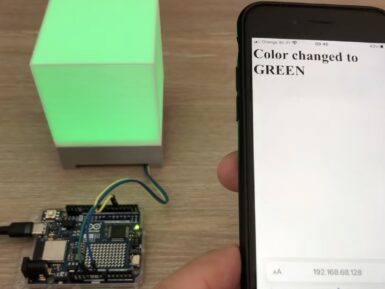
Overview
You can see the current oxygen concentration from reading the voltage values output proportional to the concentration of oxygen on the oxygen concentration linear characteristic graph. It’s suitable for detecting oxygen concentration in the environment. Grove - Gas Sensor(O2) is an organic reaction module and it provides a small current in relation to the amount of O2 in the air, hence we don’t need to provide an external power.
Features
- High-precision
- High sensitivity
- Wide linearity range
- Strong anti-interference ability
- Extraordinary reliability
Tech specs
Specification
|
Items |
Parameter |
|
Measurement Range |
0-25% |
|
Detect Life |
two years |
|
Sensitivity |
0.05~0.15 mA (in air) |
|
Temperature Range |
-20 oC~50 oC |
|
Preheat Time |
20 minutes |
Get Inspired

Syntaxx is powered by three Arduino boards, each handling specific functions to create a seamless and dynamic performance:

It can be tough to get started with building an Internet of Things (IoT) project from the ground-up, as getting connected, serving a webpage, and managing other devices can all be a challenge to a beginner. This is why the YouTuber known as “Mario’s Ideas” made an end-to-end tutorial that details everything one might need to build a smart RGB lamp. Because the Arduino UNO R4 WiFi contains an ESP32-S3 chip for its Wi-Fi radio and Renesas RA4M1 microcontroller, it was the perfect candidate. Mario’s sketch begins with a call to initialize the Wi-Fi module before attempting to connect to his local access point. Once finished, it enters a loop that continuously checks if a client has connected to the web server, and if one has, reads the requested path while also seeing if the string contains “/H” to denote an “ON” command to set the LED. Toggling an LED is useful, but Mario wanted to take things a step further by building a tangible — in this case a lamp. His 3D-printed enclosure features a recessed base and translucent cube for diffusing the light emitted by a grid of NeoPixels. Controlling the color was just as easy since any browser could still send a request path containing a color and get back the lamp’s updated status. To see more about this IoT lamp project, you can watch Mario’s video below!





